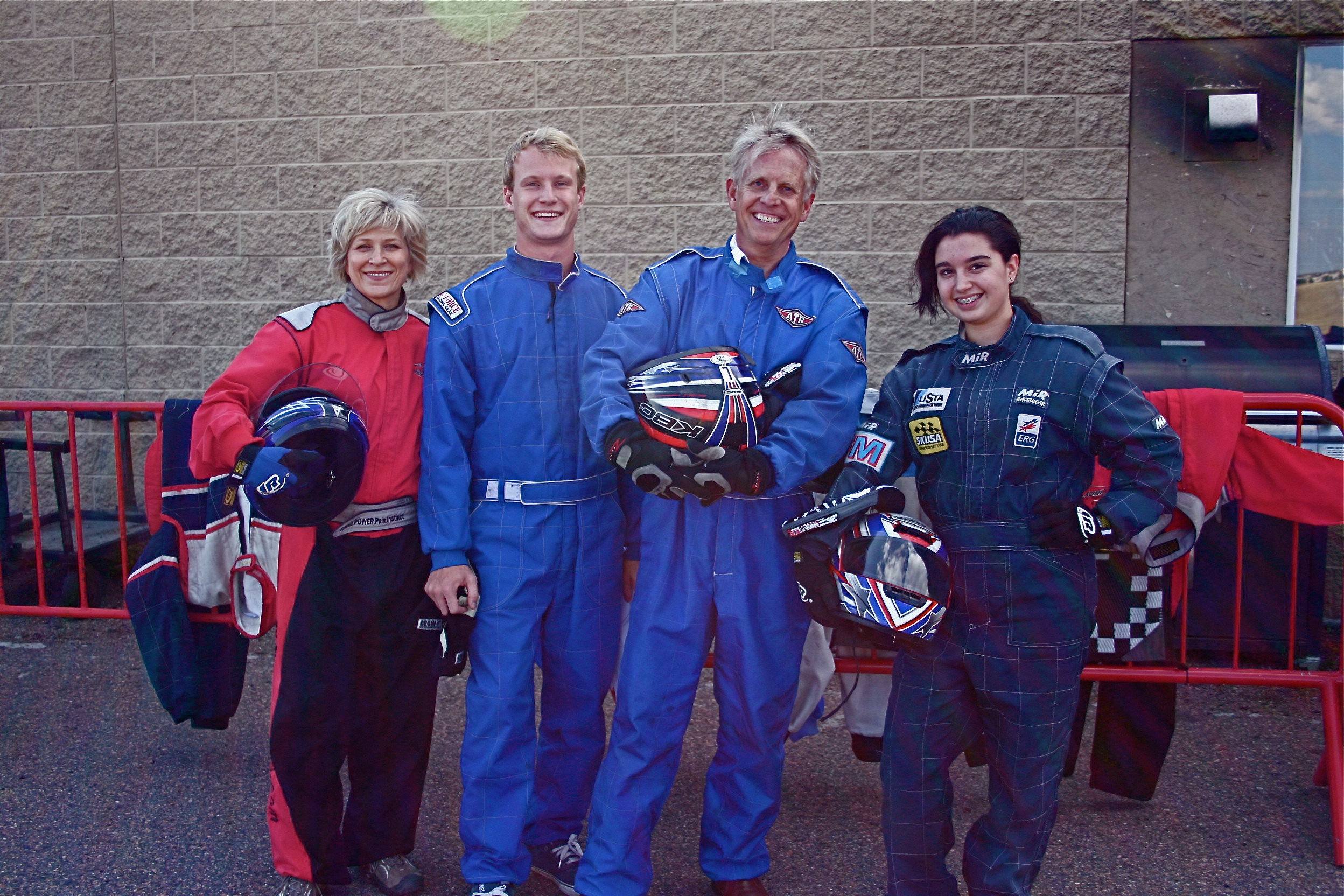
Katasi Founder and CEO Scott Tibbitts practicing focused driving on Father’s Day with his family: his wife, Jackie; son, Ryan; and daughter, Alyssa.
Musician. Storyteller. Entrepreneur. Engineer. Father.
In 2008, Scott Tibbitts arrived for a meeting in Denver, CO with Dave Sueper: husband, father of two, and vice president of an engineering company Scott was looking to work with. Even though Scott and Dave had never met– this would have been their first meeting–Scott was stunned to learn that Dave had been killed in a two-car crash only hours earlier on his way to the office.
The cause of the crash? The driver of the other vehicle had been distracted by his phone and ran a red light before t-boning Dave’s car.
Scott was profoundly affected by the emotional devastation of Dave’s co-workers; he had grieved alongside his own employees after a similar loss in his former company. But more so, Scott was moved by the thought that a family not unlike his own–both men were husbands and fathers of two children–had just been devastated by an action both mindless and tragic.
“I could not shake this idea that I had just driven through the same intersection. If the meeting had been scheduled two hours earlier, that could have been me. And it would have been Jackie picking up that phone call: ‘I’m sorry, but your husband’s been in an auto crash…’”
“This whole thing kind of went deep inside me. It wouldn’t let go–this feeling–it just wouldn’t let go,” Scott tells Katie Couric in a 2014 Yahoo! News interview.
Scott was in a unique position to create a solution to the developing epidemic of distracted driving. A rocket scientist and entrepreneur searching for his next venture, he was drawn to finding solutions to significant problems.
What if those phone calls—-the ones that begin with “There’s been an accident…”–would never happen? How can technology solve this problem, preventing untold numbers of those calls?
In 2009, Scott gathered a team of successful technical entrepreneurs who shared his passion to find a technological solution. They were convinced that the existing answers to distracted driving were not viable, and they were “crystal clear” on what the solution would be.
“We imagined a solution that leveraged coming technologies such as the Internet of Things, connected vehicles, and the ubiquity of Cloud computing,” Scott says. “We believed that if we could envision and develop such a ‘future technology state’ solution, we would be able to accelerate deployment of THE technical solution to distracted driving by several years, saving tens of thousands of lives.”
In 2010, Scott and a team of Colorado-based executives from the telecom and aerospace industries founded Katasi to create the technology that ultimately became Groove.
Meet Groove by Katasi

Katasi’s Groove is a small module that plugs into a port under the steering wheel of most cars manufactured since 1996.
Compatible with any phone, Katasi’s Groove connects your car to the Cloud, notifying your phone provider you are driving and enabling them to block text messages, phone calls, and social media updates while allowing you to access GPS and music streaming.
While your car is in motion, the Cloud becomes your personal assistant, notifying those who are sending you messages that you are driving, and the messages will be forwarded when it’s safe; after you arrive at your destination, any texts, phone messages, and updates sent during your drive are forwarded to your phone.
Coming soon: GrooveGame by Katasi also celebrates and rewards focused drivers! GrooveGame goes beyond being a tool to restrict distractions, allowing drivers to compete for “best on the road” and providing sweet rewards for focused drivers through our brand partners.
“The key to the future of the world is finding the hopeful stories and letting them be known.” –Pete Seeger
That’s just the beginning of Katasi’s story. It’s been a remarkable ride so far, and we invite you to share more of our journey.



